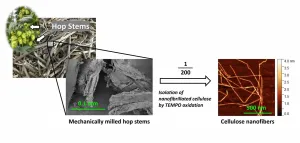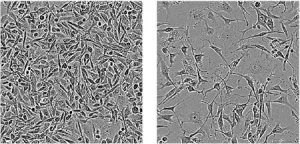Only 20 states used health equity committees in COVID-19 vaccine distribution planning
New analysis finds that despite major COVID-19 health disparities, fewer than half of US states included health equity committees in vaccine distribution plans, and only 8 included representatives from minority groups
2021-07-02
(Press-News.org) During the large second wave of the COVID-19 pandemic in fall 2020, pulmonologist and critical care provider Juan C. Rojas, MD, reflected on how disproportionately members of minority populations were being affected by the disease. After hearing similar thoughts from colleagues in New Orleans and New York City, Rojas began to wonder how, if at all, state governments planned to ensure these disparities would be addressed when COVID-19 vaccines were rolled out to the public.
In a new study published July 2 in JAMA Network Open, Rojas and his team were surprised to find that while 43 states (out of 51, including all 50 states and Washington, D.C.) created a committee to develop a vaccine distribution plan, only 20 plans mentioned using a health equity committee to assist with plan development. Of those 20 health equity committees, only 8 actually included minority group representatives, with remaining members including physicians, government officials, ethicists and clergy.
"It wasn't surprising to find that there was variability across states, but it was surprising to find that most states didn't have a committee of diverse stakeholders to help address this equity problem," said Rojas, who was senior author on the study. "There weren't many places where patient advocates were included on the committee to add a voice about the additional challenges that might exist for these vulnerable patients."
Additionally, the team found that states used different high-risk criteria and medical conditions to determine which group would get priority vaccine access.
"Some states prioritized people over 65, while others prioritize people over 75," said Rojas. "Diabetes and obesity were the most common high-risk conditions listed in the plans we looked at. But then, sickle cell disease, which is much more common in African-Americans than in other ethnicities, was only listed as a high-risk condition in 72% of plans. But a high-risk condition is high-risk, no matter what state you live in. This shows that we could do better as a country to develop consistent parameters for these kinds of situations."
The researchers analyzed early versions of these plans, and acknowledge that most remained in "draft" status throughout their analysis since each state's task force continued to adjust and update vaccine rollout efforts. In future studies, the team hopes to investigate how those plans translated to outcomes in vaccine distribution.
"Now that we have more vaccine available, how have these states performed?" said Rojas. "We're looking county by county, and state by state, to see if the equity planning done by individual states actually bore out in better vaccination rates for those high-risk patient populations."
Rojas hopes that this work can be used to help inform ongoing COVID-19 vaccination efforts, but more importantly, that it can help guide policies for potential future healthcare crises.
"The important takeaway here is that having a standardized process in which states and the country can use to roll out something as valuable and complicated as a vaccine to our citizens, with an acknowledgement of existing healthcare disparities," he said. "There need to be conversations about equitable distribution, first by acknowledging that these disparities exist, and then by thinking about how we can create policies that will ensure adequate and equitable access to these vaccines."
INFORMATION:
The study, "US National Evaluation of Health Equity in COVID-19 Vaccine Distribution Plan," was supported by the American Diabetes Association (7-20-COVID-053), the National Institutes of Health (U54 GM104940) and the Centers for Disease Control and Prevention (75D301-20-R-67897). Additional authors include Amber Hardeman and Joshua Denson of Tulane University; and Taylor Wong and Radu Postelnicu of the New York University Grossman School of Medicine.
About the University of Chicago Medicine & Biological Sciences
The University of Chicago Medicine, with a history dating back to 1927, is one of the nation's leading academic health systems. It unites the missions of the University of Chicago Medical Center, Pritzker School of Medicine and the Biological Sciences Division. Twelve Nobel Prize winners in physiology or medicine have been affiliated with the University of Chicago Medicine. Its main Hyde Park campus is home to the Center for Care and Discovery, Bernard Mitchell Hospital, Comer Children's Hospital and the Duchossois Center for Advanced Medicine. It also has ambulatory facilities in Orland Park, South Loop and River East as well as affiliations and partnerships that create a regional network of care. UChicago Medicine offers a full range of specialty-care services for adults and children through more than 40 institutes and centers including an NCI-designated Comprehensive Cancer Center. Together with Harvey-based Ingalls Memorial, UChicago Medicine has 1,296 licensed beds, nearly 1,300 attending physicians, over 2,800 nurses and about 970 residents and fellows.
Visit UChicago Medicine's health and science news blog at http://www.uchicagomedicine.org/forefront.
Twitter @UChicagoMed
Facebook.com/UChicagoMed
Facebook.com/UChicagoMedComer
ELSE PRESS RELEASES FROM THIS DATE:
2021-07-02
(Boston)--Would you be more willing to get vaccinated against the COVID-19 virus if you could participate in a lottery for cash and prizes? The answer was surprisingly no, according to Boston University School of Medicine (BUSM) researchers who found that Ohio's "Vax-a-Million" lottery-based incentive system, intended to increase COVID-19 vaccination rates, was not associated with an increase in COVD-19 vaccinations.
Prior reports in the media had suggested that the Ohio lottery increased COVID-19 vaccinations, leading other states to use COVID-19 vaccine incentive lotteries in an attempt to increase slowing vaccination rates. "However, prior evaluations of ...
2021-07-02
Some three quarters of the biomass in hop plants used in beer-making ends up in landfills. But a group of Japanese researchers has developed a technique that 'upcycles' that waste hop into cellulose nanofibers (CNFs). A paper describing the technique was published in the journal ACS Agricultural Science & Technology on June 11.
In the past few years, craft beer-making has exploded in popularity around the world, including many beer styles that make use of many more and different types of hops than conventional commercial beers. A traditional preservative in beer, hops also add ...
2021-07-02
Berkeley -- Many insects and spiders get their uncanny ability to scurry up walls and walk upside down on ceilings with the help of specialized sticky footpads that allow them to adhere to surfaces in places where no human would dare to go.
Engineers at the University of California, Berkeley, have used the principle behind some of these footpads, called electrostatic adhesion, to create an insect-scale robot that can swerve and pivot with the agility of a cheetah, giving it the ability to traverse complex terrain and quickly avoid unexpected obstacles.
The robot is constructed from a thin, layered material that bends and contracts when an electric voltage is applied. In a 2019 paper, the research team demonstrated that this simple ...
2021-07-02
Wander around a desert most anywhere in the world, and eventually you'll notice dark-stained rocks, especially where the sun shines most brightly and water trickles down or dew gathers. In some spots, if you're lucky, you might stumble upon ancient art - petroglyphs - carved into the stain. For years, however, researchers have understood more about the petroglyphs than the mysterious dark stain, called rock varnish, in which they were drawn.
In particular, science has yet to come to a conclusion about where rock varnish, which is unusually rich in manganese, comes from.
Now, scientists at the California Institute of Technology, the Department of Energy's SLAC National Accelerator ...
2021-07-02
Neuroscientists at the University of Massachusetts Amherst have demonstrated in new research that dopamine plays a key role in how songbirds learn complex new sounds.
Published in the Journal of Neuroscience, the finding that dopamine drives plasticity in the auditory pallium of zebra finches lays new groundwork for advancing the understanding of the functions of this neurotransmitter in an area of the brain that encodes complex stimuli.
"People associate dopamine with reward and pleasure," says lead author Matheus Macedo-Lima, who performed the research in the lab of senior author Luke Remage-Healey as a Ph.D. student in UMass Amherst's Neuroscience and Behavior graduate program. "It's a very well-known concept that dopamine is involved in learning. ...
2021-07-02
In cancer research, it's a common goal to find something about cancer cells -- some sort of molecule -- that drives their ability to survive, and determine if that molecule could be inhibited with a drug, halting tumor growth. Even better: The molecule isn't present in healthy cells, so they remain untouched by the new therapy.
Plenty of progress has been made in this approach, known as molecular targeted cancer therapy. Some current cancer therapeutics inhibit enzymes that become overactive, allowing cells to proliferate, spread and survive beyond ...
2021-07-02
What The Study Did: Researchers in this study aimed to determine how each state and the District of Columbia planned to ensure equitable COVID-19 vaccine distribution.
Authors: Juan C. Rojas, M.D., of the University of Chicago, is the corresponding author.
To access the embargoed study: Visit our For The Media website at this link https://media.jamanetwork.com/
(doi:10.1001/jamanetworkopen.2021.15653)
Editor's Note: The article includes conflict of interest and funding/support disclosures. Please see the article for additional information, including other authors, author contributions and affiliations, conflict of interest and financial ...
2021-07-02
What The Study Did: Changes in the use of women's preventive health services during the COVID-19 pandemic, including screening for sexually transmitted infections, breast and cervical cancer, and obtaining contraceptives from pharmacies are described by researchers in this study.
Authors: Nora V. Becker, M.D., Ph.D., of the University of Michigan Medical School in Ann Arbor, is the corresponding author.
To access the embargoed study: Visit our For The Media website at this link https://media.jamanetwork.com/
(doi:10.1001/jamahealthforum.2021.1408)
Editor's Note: The article includes conflict of interest disclosures. Please see the article for additional information, including other authors, ...
2021-07-02
What The Study Did: Researchers estimated the frequency and magnitude of surprise bills for deliveries and newborn hospitalizations, which are the leading reasons for hospitalization in the United States, to illustrate the potential benefits of federal legislation that will protect families from most surprise bills. Potential surprise bills were defined as claims from out-of-network clinicians and ancillary service providers, such as an ambulance.
Authors: Kao-Ping Chua, M.D., Ph.D., of the University of Michigan Medical School in Ann Arbor, is the corresponding author.
To access the embargoed study: Visit our For The Media website at this link https://media.jamanetwork.com/
(doi:10.1001/jamahealthforum.2021.1460)
Editor's Note: The article includes conflict of ...
2021-07-02
What The Study Did: This study investigates whether different risk factors identify the same hospitals caring for a high proportion of disadvantaged patients using seven definitions of social risk.
Authors: Susannah M. Bernheim, M.D., M.H.S., of the Yale University School of Medicine in New Haven, Connecticut, is the corresponding author.
To access the embargoed study: Visit our For The Media website at this link https://media.jamanetwork.com/
(doi:10.1001/jamahealthforum.2021.1323)
Editor's Note: The article includes conflict of interest and funding/support ...
LAST 30 PRESS RELEASES:
[Press-News.org] Only 20 states used health equity committees in COVID-19 vaccine distribution planning
New analysis finds that despite major COVID-19 health disparities, fewer than half of US states included health equity committees in vaccine distribution plans, and only 8 included representatives from minority groups



